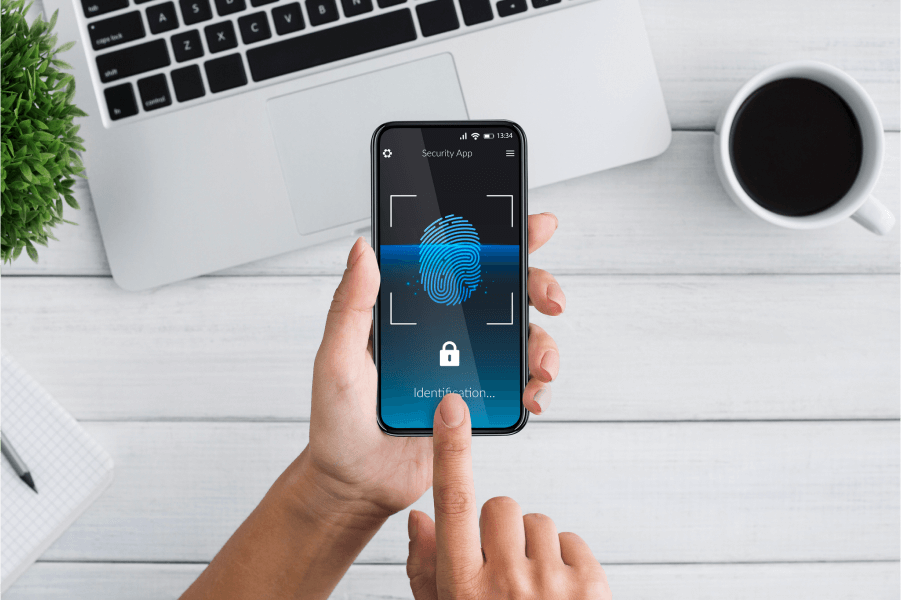The use of innovative authentication methods is one of the most important aspects in the field of cybersecurity, one that constantly evolves and makes the user experience much more convenient without compromising the safety and security of your accounts and devices.
Various tech innovations, such as passwordless authentication and consent-based authentication, are the leading trends in cybersecurity in terms of providing improved security, convenience, and user control. In this blog, we’ll have an analysis of passwordless authentication and its impact on the future of cybersecurity and the current digital environment.
How does passwordless authentication work?
Passwordless authentication minimizes the need for standard passwords, which are exposed to a variety of cybersecurity threats like phishing attempts and password leaks. By reducing the use of passwords, organizations can drastically minimize the risk of illegal access and data breaches.
Hiring a company that will help you keep your data safe against unauthorized access becomes crucial. Companies like BlokSec, offer unique, innovative, and secure ways to safely and conveniently access web-based and mobile apps, websites, and other remote services with added protection from identity-centric cyberattacks.
Examples of passwordless authentication methods
Passwordless authentication examples include the use of advanced techniques like biometrics (e.g., fingerprint or facial recognition), multi-factor authentication (MFA), and device-based authentication (e.g., hardware tokens or mobile authenticator apps).
- Biometrics: Biometrics are a valuable tool for authentication, offering a secure and user-friendly alternative to passwords. By utilizing factors like fingerprints, facial recognition, or retina scans, users can be easily verified.
- Multi-factor authentication (MFA): Multi-factor authentication (MFA) requires users to provide multiple verification factors in order to access a system, application, or network. It also enhances identity and access management policies by authorizing multiple authentication factors, making it more challenging for unauthorized individuals to gain access to sensitive data or systems.
- Hardware tokens: Hardware tokens provide a strong alternative to passwords, improving security by requiring physical possession for access. These hardware-based authentication methods, such as security keys, offer a reliable way to enhance security.
- One-time password (OTP): A one-time password (OTP) is a unique code or password that is created for each login session or transaction. It is typically used in conjunction with multi-factor authentication to securely authenticate a user’s identity. Users can receive OTPs via SMS, email, or authenticator apps, which increases the security of regular passwords.
- Magic links: Magic links offer users a convenient method of accessing systems without the need for passwords. These links generate unique access points that ensure secure entry.
Benefits of passwordless authentication
Passwordless authentication provides a number of benefits, including:
- Improved security: By removing the vulnerabilities commonly associated with passwords, passwordless authentication significantly reduces the risk of credential theft and phishing attacks, thereby enhancing overall security.
- Efficient account management: Passwordless authentication optimizes account management by eliminating the hassle of password resets and recovery. It also offers centralized authentication systems to bolster security.
- Regulatory compliance: Passwordless authentication and consent-based authorization services are in line with key concepts of data privacy rules, such as the General Data Protection Regulation (GDPR).
- Enhanced user experience: Passwordless security makes it easier to log in because you don’t have to remember multiple passwords. This improves the user experience, minimizes password fatigue, and allows users to access their online accounts more quickly and conveniently.
- Cost efficiency: Passwordless authentication also provides a lot of benefits for businesses and other organizations. While there may be initial costs involved with implementing passwordless authentication, it provides long-term cost savings by lowering the risk and severity of security breaches. Lower maintenance expenses and retention costs all contribute to total cost-efficiency.
As the cybersecurity industry continues to offer exciting innovations for current and future professionals, now is the best time to enhance your knowledge and skills in this thriving field! TSOM’s Diploma in Cybersecurity Specialist Co-op program offers an industry-standard curriculum relevant to the latest cybersecurity developments. The program also opens a lot of opportunities for students to enhance their skills, with events such as cybersecurity capture the flag (CTF) competitions, career workshops, and job fairs to familiarize them with the Canadian workforce environment.
Pursue your dreams of becoming a successful professional in this exciting field! Start your journey with us by sending an email to [email protected].
If you are a business owner or hiring manager looking to expand your cybersecurity team by employing one of our students or graduates, contact [email protected].


